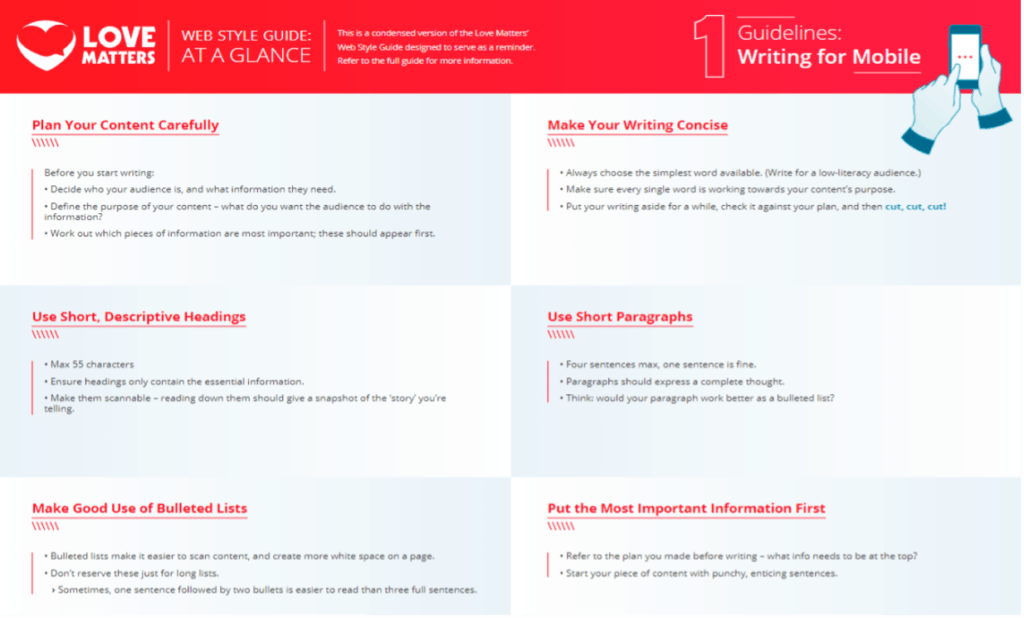Explore: Media, Channels & Platforms
Explore: Explore a variety of potential digital solutions. Come up with as many ideas as possible before narrowing it down to a select few good ones. Identify what channels would work best for your audience.
In this course, when we use the term medium, we are referring to the form the sender has chosen to reach his receiver. The choice of medium depends on who the audience is and what the message is. The basics are video, audio, text, on-the-ground or visual.
VIDEO | AUDIO | TEXT | ON THE GROUND | VISUAL |
Animation Short Videos Vlogs Long form Montages 3D Immersive/VR Live Broadcasts | Podcast Radio Sound Bites Audio Notes Songs Jingles Themes | Articles Written Reports Essays Typography Idea Clouds Blogs Tweets Billboards Posters Surveys Letters | Meetings Interviews Press Releases Events Promotion Flashmobs Graffiti Takeovers Theatre/Plays Activations Town Halls Demos/Strikes | Graphics Photos Photo Essays Charts Graphs Banners |
The media above are agnostic of channel. This means that they can be on traditional channels like television, in hard copy print like newspapers, or they can be on digital platforms.
A channel is simply where the content can be found. For instance, on a television, in a cinema, on a display screen (like LCD screens in stations/squares/public transport), or on platforms like Facebook, Instagram or YouTube.
A medium, however, is how the content is presented. For instance, a video, graph, or an article.
Note: Throughout this training, we will use the definitions of the terms medium and channel as described above. However, these terms can have different (sometimes conflicting) meanings. Google Analytics, for example, uses the term source/medium/campaign to identify the source of a link. In analytics medium is usually defined as a “bucket of channels”, grouped by category (Source).
Traditional vs. digital channels
We make a distinction between traditional media channels and digital media channels. Digital channels surged with the invention of the internet, which became a widespread tool for accessing information.


TRADITIONAL MEDIA CHANNELS | DIGITAL MEDIA CHANNELS |
› Hardcopy Press: newspapers, magazines, periodicals. › Radio: shortwave, long wave and ham radio › Direct Marketing: mail, telephone, push SMS › Outdoor/Traditional Display: billboards, posters › Television: community TV, national broadcasters, satellite TV, merchandising and sponsorships › Cinema | › Online Video: YouTube, Vimeo › Social Media: Facebook, Instagram, Twitter, Facebook Groups, VK, Weibo, WeChat, Pinterest, Snapchat, LinkedIn, TikTok › Direct Messaging Applications: WhatsApp, Telegram, WeChat, Facebook Messenger › Search Engine Optimisation & Search Engine Marketing › Email marketing › Augmented reality › In-game advertising |
There are two powerful advantages to reaching target audiences digitally:
- You can segment your audience very precisely (for example, like current location) which means that your messages can (and must) be personalised and tailored for your particular audience.
- The digital space is almost completely measurable. Digital campaigns allow you to monitor exactly how campaigns are performing, you can easily identify which channels are most effective and where you can focus your efforts best for the highest impact.
Social media & mobile channels
Social media can be defined as:
Forms of electronic communication through which users create online communities to share information, ideas, personal messages, and other content (Source).
At a global level, the most popular social media channel is Facebook, followed by YouTube and WhatsApp.
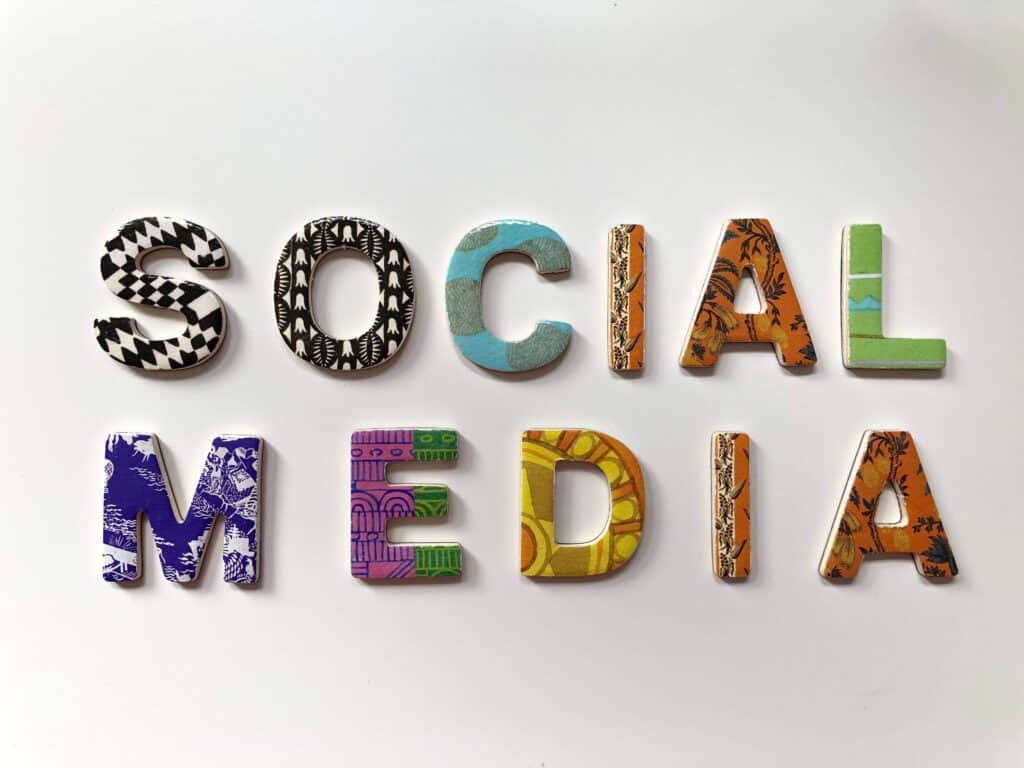
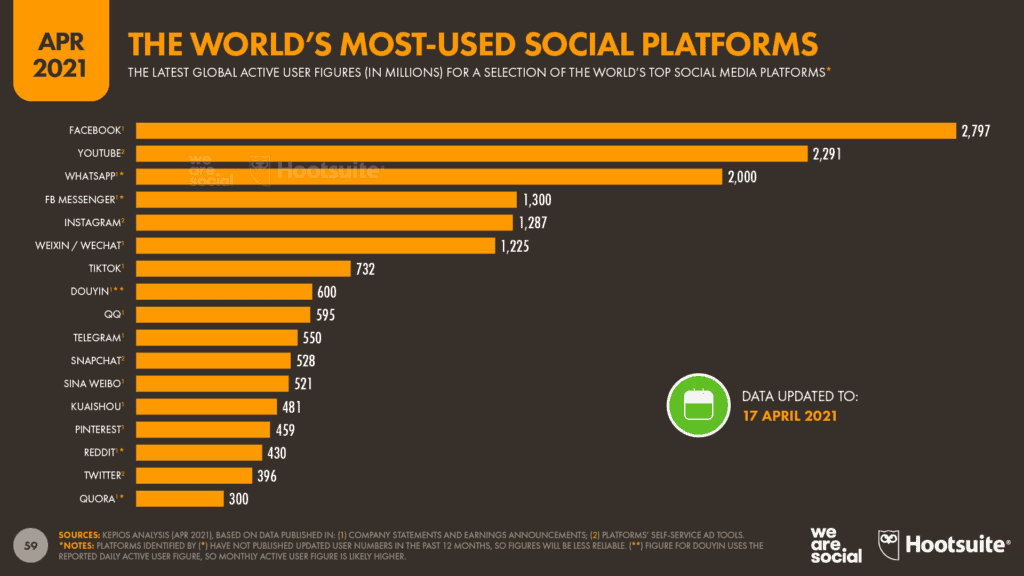
We are increasingly accessing email, websites, social media and apps through mobile devices such as smartphones and tablets. Almost anything that can be accessed on a desktop computer, can be accessed on a mobile device as well. According to GlobalWebIndex, mobile phones account for just over 50% of all the time we spend online.
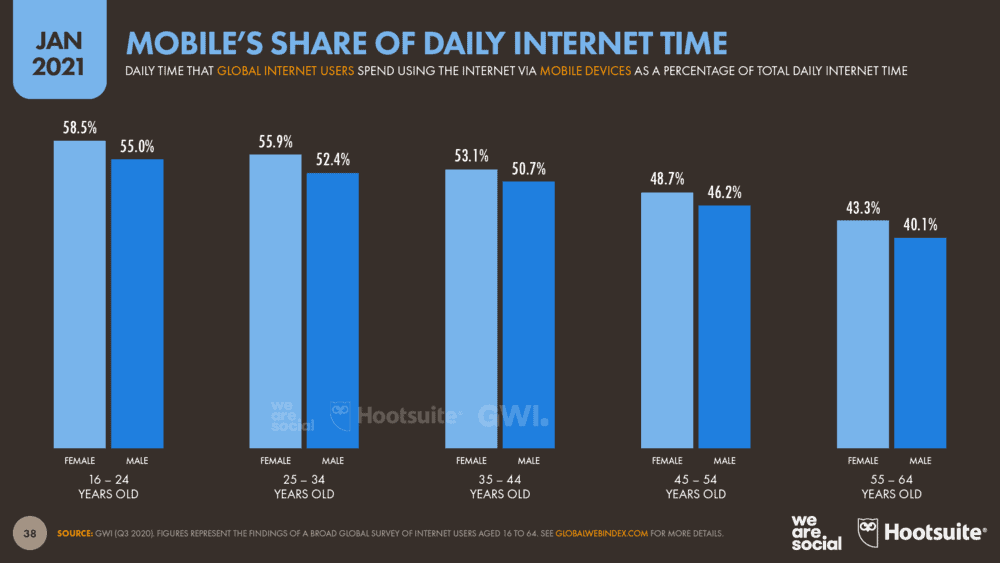
Below you’ll find a list of the most commonly used mobile features that marketeers, campaigners, activists or other communication professionals can use to interact with their audience:
Applications like social media apps, entertainment apps, games and news can be important channels to reach your audiences. A quick desk research can give you up to date insight on what is the most used (or most actively used apps) in your region or globally.
For example, mobile data and analytics company App Annie Intelligence regularly publishes the global top apps worldwide, where you can see the most downloaded apps and apps with most active users. Here’s an example for the top apps worldwide in comparison of Q1 2020 rankings vs. Q4 2019.

An important opportunity of mobile apps are mobile social networks which allow a mobile-user friendly user experience. Users tend to keep their phones nearby, phones are very personal devices and have opportunities for geolocation and social search. Don’t forget to keep in mind these opportunities can also have implications for safety and security.
Bluetooth within an application to send push notifications when within a certain distance. It’s a short-distance wireless transfer protocol for connecting devices.
AR/VR (augmented reality/virtual reality)
- Augmented reality superimposes computer graphics into the physical space around the person using an AR device (usually a smartphone or tablet).
- Virtual reality takes this a step further using products like Google Cardboard and 360-degree videos in an attempt to create an even more immersive interaction.
LOVE MATTERS INDIA
EXAMPLES OF HOW AUGMENTED REALITY AND VIRTUAL REALITY CAN BE USED IN SRHR FIELD
In 2017, Love Matters produced India’s first virtual reality film on the issue of intimate partner violence named #KyaYahiPyarHai / IsThisLove?
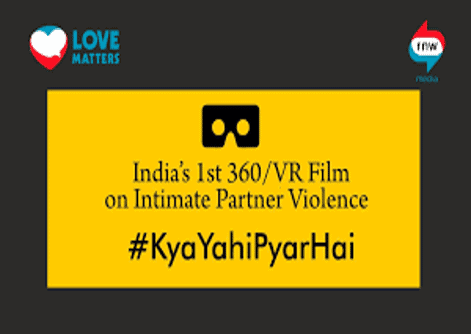
The film used virtual reality technology to make the audience step into the shoes of a young Indian woman Anuja’s dilemmas as she wades through the ups and downs of her relationship with Manoj. Produced by ENowHere Media for the media NGO Love Matters India, Kya Yahi Pyar Hai breaks the taboo around intimate partner violence by using virtual reality/360° in public installations to narrate a powerful story and connect with young people.
The film was short-listed in the Virtual Reality Category and moved to the final round at the 5th annual Social Impact Media Awards (SIMA Awards).
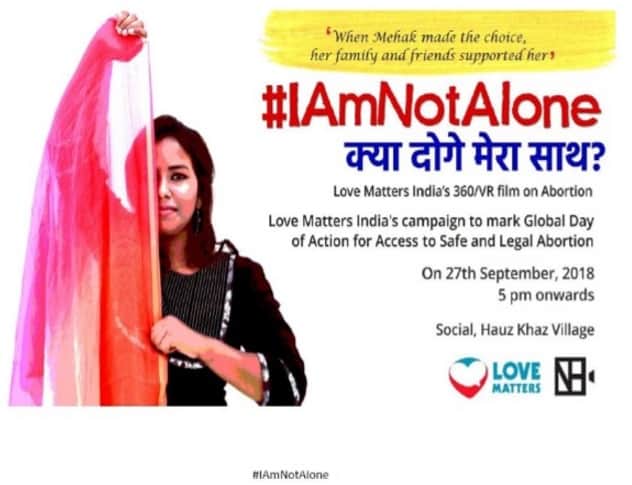
On 27th of September 2018, Love Matters released India’s first 360/VR film on the issue of abortion. The film ‘I Am Not Alone’ used the virtual reality medium to narrate the powerful story of Mehak – a young girl, who described the support she got from family and the society when she made a decision to abort. The short film is conceptualised, scripted and produced by Love Matters India and directed by Gayatri Parameswarn from NoWhereMedia.
The film called on partners, family members, friends, colleagues, doctors and media to support women when they take a decision to seek abortion and for women to step up and share their abortion experiences, enabling other women to take decision their bodies, health and lives. In 2019, Love Matters India launched an Augmented Reality app prototype featuring interesting and relatable animated characters who provide sexual education comprehensively in a fun and blush-free manner. This app correlates and engages with an existing commonplace school textbook and allows students to scan certain sections to reveal important omitted information. The app prototype was widely tested across 6 cities in India with 155 students and currently the full version of the app is under construction. (Source)
Other mobile specific channels of communication can include:
- QR codes that can be used to access information like website URLs that are stored in a QR code which can be scanned by an app or the camera of a smartphone. Can be useful to share a survey or to prompt to your website.
- Push messaging that occurs as a notification from an app that displays on a smartphone while the app is not actively in use (don’t we all love and hate the push notifications of Whatsapp, Facebook, or any other apps we use for communication, entertainment, or shopping).
LOVE MATTERS – MOBILE FIRST
All our platforms are developed as mobile first as we know that most young people in our programme countries go online through their phones. These phones are generally not the most modern or sophisticated, so we also take this into consideration when designing and optimising our platforms. In some countries we are working on using mobile features such as Bluetooth to share information without internet access. ‘Mobile first’ means creating content that’s first and foremost suitable for the small screens of mobile devices. Love Matters has created Web Style Guidelines with specific guidelines for writing for mobile. For more details refer to the full guide.
